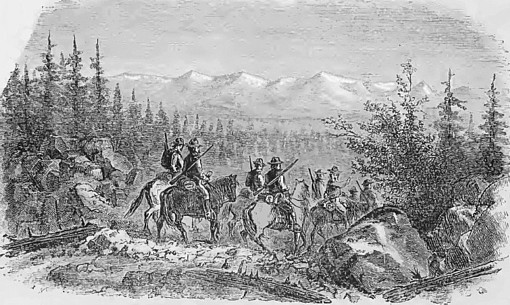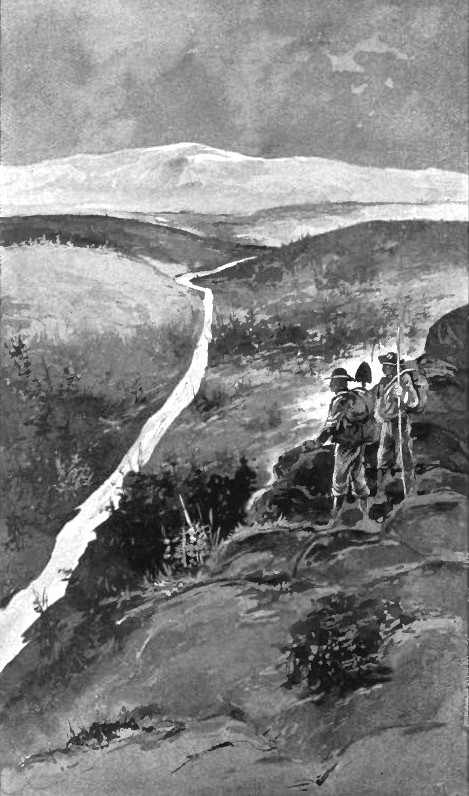Everywhere beneath the
mantle of soil and vegetation that covers the surface of the land lies rock,
the solid platform upon which the superficial soils and organic debris of
earth rests. Here and there on mountain tops, in cliffs and ledges, we see
this underlying rock exposed and projecting out from the soil: we know that
it must also underlie the sea in the same way. The outer shell of the earth
then is made of rock, which forms the foundation upon which rest all the
surface things with which we are acquainted. How thick this zone of rock is
we cannot easily see, but upon it we live and exert our activities; into it we
penetrate for coal, oil, gas, metal ores, gemstones and other useful things upon which
the material features of our modern technological civilization depend. The
rocks of the earth's crust is therefore of
the highest importance to prospectors, and the information which we have acquired
concerning it, by examination and study, forms a valuable branch of human
knowledge.
Our knowledge of all the various things which together make up that part of
the earth which it is permitted us to examine and study and which has been
comprehended under the heading of Geology has now increased to such a degree
that this science has split up into a number of well-defined, subordinate
branches or geological sciences. Thus Meteorology is the science of the
atmosphere, the summation of our knowledge of the causes and movements of
winds, storms, rain, the distribution of heat and cold, and in general the
study of the various factors that affect the air and its movements and of
the laws that govern them.
Physiography takes account of the surface features of the earth, of the
distribution of land and water and of the agencies which are modifying them,
the effects of climates and the various 'causes which together produce the
topography which the earth's surface now exhibits. Paleontology is the
science resulting from the study of the remains of past life upon the earth,
as shown by the fossils enclosed in the rocks, and teaches not only the
different forms which have existed but also seeks to discover the various
movements or migrations of life upon the earth in past ages.
The Common Rock Types:
I.
Igneous Rocks: General Concepts
The Granite Family
The Diorite Family
The Gabbro Family
The Diabase (Dolerite) Family
The Peridotite Family
The Serpentine Group
The Rhyolite Family
The Andesite Family
The Basalt Family
Pegmatite Dikes and Veins
II. Sedimentary Rocks, general concepts
Sandstone and Related Rocks
Shale and Related Rocks
Limestone and Other Carbonate Rocks
Iron Ore Sedimentary Rocks
III. Metamorphic Rocks - General Concepts
Gneiss Rocks
Mica Schist and Related Schist Rocks
Quartzite Rock
Slate Or Argillite
Greenstone / Chlorite-Schist / Greenschist
The terms Petrology and Petrography are not absolute synonyms though often so used in a general way. The former has been denned above; the latter more particularly refers to the description of rocks and especially with respect to their study by means of the microscope as explained later thus microscopic petrography. Petrology is used for the science in its broader aspects as well and covers the geological and chemical relations of rocks: thus strictly denned petrography may be said to be a branch of petrology. The synonym Lithology has become nearly obsolete. Petrology means the science of rocks; lithology would be the science of stones, but the word stone is now used in a generalized and popular way for architectural or commercial purposes and also to designate any loose piece of rock of unknown origin, rendering the term non-specific for scientific use.
By the term "rock,"
geologically speaking is meant the material composing one of the individual
parts of the earth's solid crust, which, if not exposed, everywhere
underlies the superficial covering of soil, vegetation or water which lies
upon it. The popular understanding of this term, that it denotes a hard or
firm substance, is not, geologically, a necessary one, for a soft bed of
clay or of volcanic ash is as truly a rock as a mass of the hardest
granite. Moreover it implies within limits, which will be
explained elsewhere, a certain constancy of chemical and mineral composition
of the mass recognized as forming a particular kind of rock. Thus the chance
filling of a mineral vein by variable amounts of
quartz,
calcite and ores is not accepted by petrographers as forming
a definite kind of rock. The term is also used with different meanings; it
may be denote of the substance forming parts of the earth's crust, as quartz
and feldspar arranged in a particular manner are said to form a rock like
granite or it may refer to the masses themselves and thus possess a larger,
geological significance. In a general way the former may be said to be a
petrographic, the latter a geologic usage. When used in this broader
geologic sense the mass recognized as an individual kind of rock must
possess definite boundaries and show by its relations to other rock masses
that it owes its existence to a definite geological process. The absolute
size of the mass is not involved in this, for a seam or dike of granite
cutting rocks of other kinds may be as thin as cardboard or a mile in
thickness.
Rocks are sometimes defined as aggregates of one or more minerals, but this
is not a broad enough or wholly correct definition. Rocks may be composed
entirely of minerals or entirely of glass or of a mixture of both. Minerals
are substances having definite chemical compositions and usually of
crystalline structure; glasses are molten masses chilled and solidified
without definite composition and structure. Rocks composed wholly of
minerals may be simple or compound, that is, the rock may be formed of one
kind of mineral alone, as for example, some of the purest marbles which
consist of calcite only or of a mixture of two or more like ordinary granite
which is made of grains of quartz,
feldspar and
mica.
According to their mode of origin and the position of the masses with respect to the earth's crust and to each other, rocks naturally divide themselves into three main groups, divisions which are recognized by practically all geologists. These are the igneous rocks made by the solidification of molten material; the sedimentary or bedded rocks formed by the precipitation of sediments in water, to which may be added the small group of aeolian or wind formed deposits, and the metamorphic rocks, those produced by the secondary action of certain processes such as heat or pressure upon either igneous or sedimentary ones by which their original characters are wholly or partly obscured and replaced by new ones and which are therefore most conveniently considered in a separate group. This grouping will be used in this work, and each group with its further subdivisions, their characters, relations, etc., will be treated by itself. Summarizing then what has just been stated, we have:
Igneous Rocks, solidified molten masses.
Sedimentary Rocks, precipitated sediments.
Metamorphic Rocks, formed by heat or pressure on other rocks.
We will take a look at each of these three major classes of rock and the most important members of each class individually.



